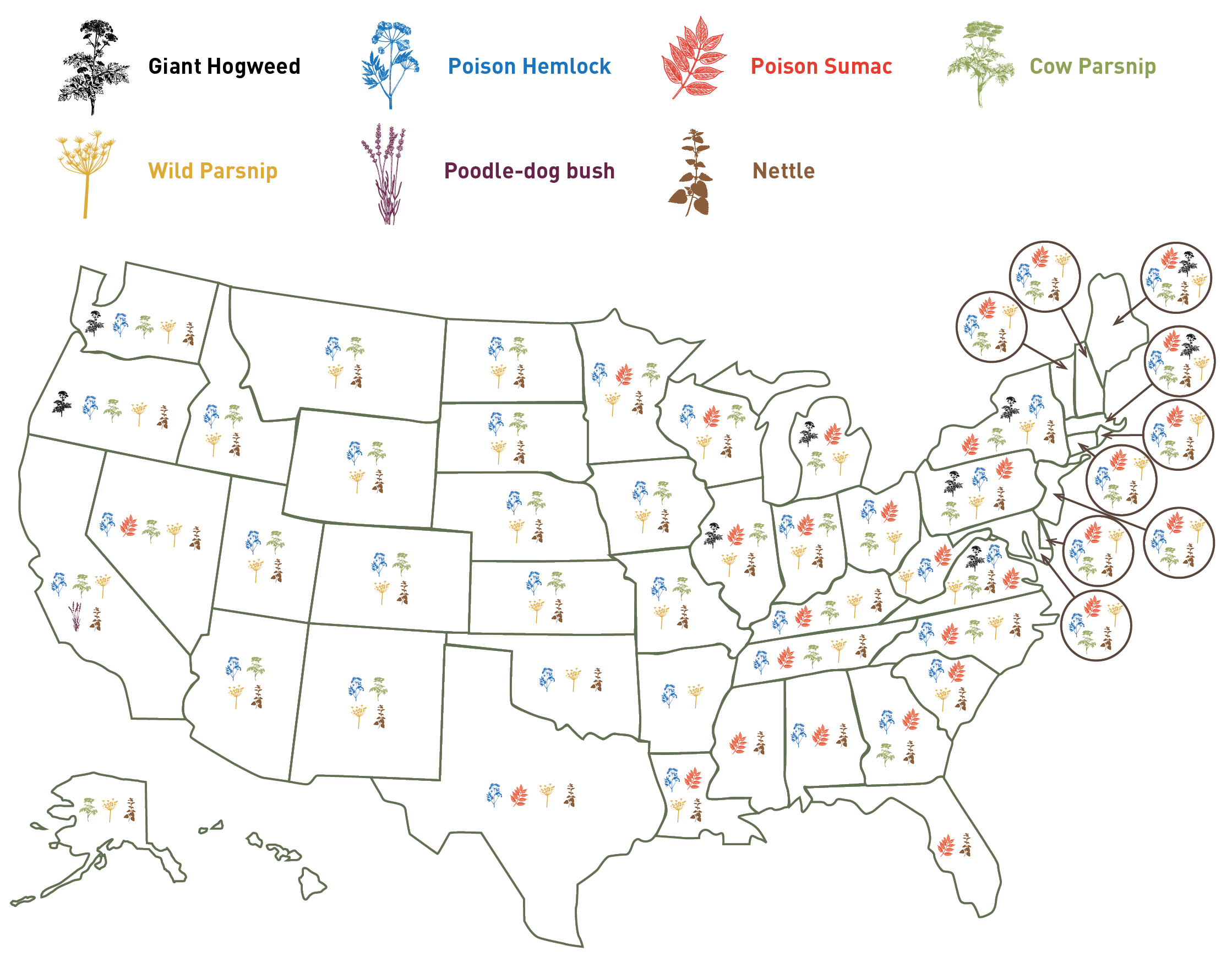Plants that can make you itch
For most, knowledge of hazardous plants is limited to the phrase, “leaves of three, leave them be.” However, despite widespread awareness of a few common culprits, many casual outdoor enthusiasts may find themselves with an itchy souvenir following an encounter with a flower or shrub.
While poison ivy is the most common cause of contact dermatitis in the United States, a host of other common plants are capable of producing skin reactions. (Learn more about poison ivy, oak, and sumac)
Your backyard can be home to a variety of potentially hazardous plants. The following homegrown crops have been known to cause skin reactions:
Strawberry
Garlic
Tomato
Comfrey
Borage
Rose hips
Hot peppers
Tulip bulbs
Daffodil bulbs
Hyacinth bulbs
In addition, combined exposure to citrus fruit and sunlight should be avoided. Lemons, limes, clementines, oranges, and grapefruit all contain light-sensitizing chemicals that can cause a rash.
Avoid rash decisions — Don't touch these plants!

Watch out! These plants can be found in all continental U.S. states:

*Spotted Water Hemlock can also be found in Alaska
Poison ivy prevention




Reference
 Atopic dermatitis: More FDA-approved treatments
Atopic dermatitis: More FDA-approved treatments
 Biosimilars: 14 FAQs
Biosimilars: 14 FAQs
 How to trim your nails
How to trim your nails
 Relieve uncontrollably itchy skin
Relieve uncontrollably itchy skin
 Fade dark spots
Fade dark spots
 Untreatable razor bumps or acne?
Untreatable razor bumps or acne?
 Tattoo removal
Tattoo removal
 Scar treatment
Scar treatment
 Free materials to help raise skin cancer awareness
Free materials to help raise skin cancer awareness
 Dermatologist-approved lesson plans, activities you can use
Dermatologist-approved lesson plans, activities you can use
 Find a Dermatologist
Find a Dermatologist
 What is a dermatologist?
What is a dermatologist?